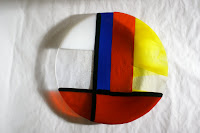The traditional owners of our land were the Gandangara people who lived in south eastern NSW from Lake George to the Nepean River and from north of Goulburn to Camden. Their tribal names includes meanings for east and west. In 1802 the explorer Francis Barallier met them near the Wollondilly River and in 1816 troops were dispatched to capture and kill Aborigines after 14 settlers were killed. By 1848 there were only 25 Aborigines registered in Gouburn after the influenza epidemics of 1846 and 1847. According to local historians it is doubtful whether there were ever large numbers of Aborigines in the Goulburn area.
They believed in animal people (burringilling) who lived in the dreaming in clouds, scrub, mountains, trees and water courses. The most important spirit was D(h)aramalan and his voice is represented by the bullroarer cut from a tree. In initiation ceremonies a rock crystal stone is used and the myth says that when once Daramalan caught a boy and hit him over the head a tooth fell out and became a rock crystal.
We chose Daramalan as our farm name because it represented a powerful and auspicious spirit that had a local connection to Goulburn. Daramalan (or Daramulum) means one legged and was the son of spirit Baime and his emu wife Birrahgnooloo. There is a rock carving in Sydney's north west showing him in half profile with one arm, an emu back and a club foot.
We would like to acknowledge the traditional owners of our land.
Footnote: Daramalan Border Leicester Stud has no association or relationship, commercial or otherwise, with Daramalan College in Canberra.
The above image is by Daniel Goodwin.




